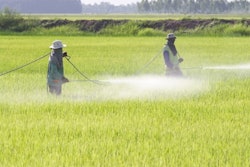
U.S. farmland values have fallen from all-time highs, according to The Pittsburgh Post-Gazette. Global surpluses left corn and soybean prices below the cost of production. And the amount of agricultural debt relative to income ballooned to the highest in three decades, just as the Federal Reserve has begun raising interest rates for the first time since 2006.
While many growers remain profitable, the global commodity slump is increasing pressure on a Midwest economy that was largely shielded from the worst of the financial crisis by high crop prices and land values. Last year, farm income was the lowest since 2002. This year’s agriculture-trade surplus in the U.S. — the world’s top exporter — will be the smallest in a decade. At the same time, sales are dropping for the likes of tractor-maker Deere & Co. and seed supplier Monsanto Co.
“The farm economy had a near-perfect five or six years,” built upon record U.S. demand for corn-based ethanol in fuel, surging food purchases in Asia and near-zero-percent interest rates that helped spur land investment, said Brent Gloy, an agricultural economist at Purdue University in West Lafayette, Indiana.
With the oil slump eroding ethanol margins and a strong dollar eroding U.S. exports, the Fed’s decision last month to start raising borrowing costs “means there’s nothing left of the boom,” he said.
With the prices of corn and soybeans, the nation’s biggest crops, down by more than half from records in 2012, net farm income probably tumbled in 2015 to a 13-year low of $55.9 billion, down 55 percent from a record $123.3 billion in 2013, the U.S. Department of Agriculture estimates. Debt is 6.6 times larger than net income, up from 3.8 a year earlier, and the ratio is the highest since 1984, when farm foreclosures were the highest since the Great Depression, government data show.
The U.S. crop glut may be worsening. Inventories of corn, wheat and soybeans on Dec. 1 were bigger than a year earlier, the USDA said in a report Tuesday, as farmers kept their bins full waiting for a better price. A separate government report sees record global wheat production in the current marketing year.
As surpluses keep prices low, demand for American farm exports is dropping as other countries boost output and the strong dollar makes competing supplies from Brazil to Ukraine cheaper for importers. With U.S. exports at a six-year low and imports up, the nation’s trade balance in agriculture will slump to $9.5 billion in 2016, down 78 percent from a record $43.1 billion in 2014, when shipments were the biggest ever, USDA data show.
To read more, click here.

















